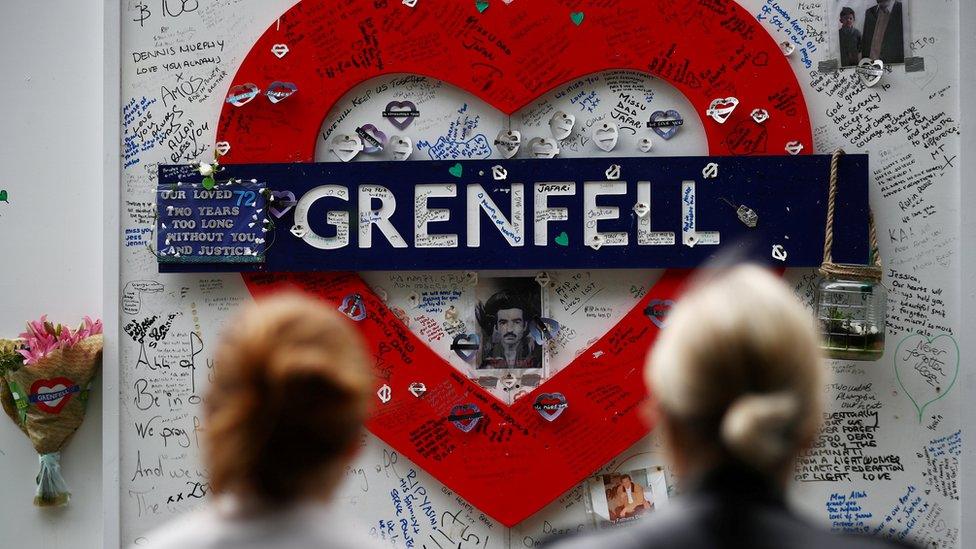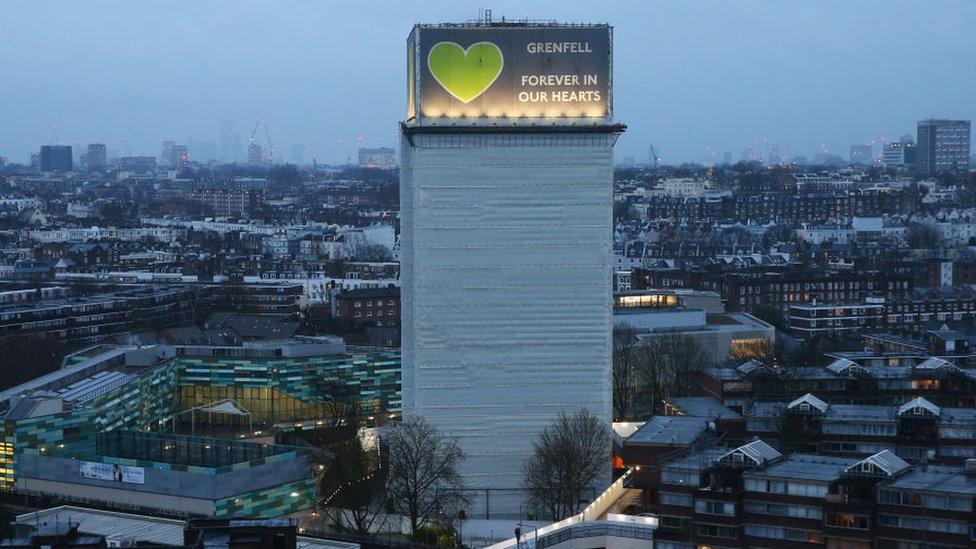Grenfell architect did not check fire safety guidance for tall buildings
- Published

The architect for the Grenfell Tower refurbishment has admitted that he did not check official advice on fire safety in high rises, during the work.
Bruce Sounes, from Studio E, told the inquiry he was not aware of concerns over the safety of combustible panels often being used on housing blocks.
He said fire safety details were for specialist consultants and added that he had not designed the cladding used.
The fire at the 24-storey tower in west London killed 72 people in June 2017.
The inquiry - now in its second phase - is looking into how the building came to be covered in such cladding during its refurbishment between 2012 and 2016.
Mr Sounes was in charge of the day-to-day management of the refurbishment project for the tower.
On the second day of hearings, Mr Sounes was being examined about his knowledge of the building regulations and associated guidance.
He was unable to explain to the inquiry how the new cladding system chosen for Grenfell met the government's guidance for fire safety in tall buildings, despite accepting that fire safety was "fundamental to the work of an architect's practice".
Mr Sounes said he was familiar with the broad regulation that a building should not be able to spread fire on the outside.
But he "didn't recall hearing of" the specific guidance that materials had to be of "limited combustibility" when used above 18m (59ft).
Inquiry barrister Kate Grange asked him: "You didn't apply your mind at the time of the Grenfell project to how this clause applied to the materials that you were selecting?"
He responded: "As I wasn't myself preparing the documents - I did not, no."
Later the inquiry was shown the specification for the project - which Mr Sounes had drawn up - and he was asked why he had not checked the products he had chosen complied with regulations.
"We asked for advice," he said, "but it wasn't for us to... satisfy ourselves because I don't think that was within our ability."
The inquiry had already heard that Studio E had no experience of working on tall buildings.
And in Tuesday's evidence, it heard that the architects had tried to keep the budget for the project below a limit which would have required the project to be put out to tender.
Mr Sounes said fees were delayed to keep the architect's cost below the £174,000 limit.

Studio E may have designed the refurbished tower but, Mr Sounes said, council building control was responsible for making sure it was within the building regulations.
The Royal Borough of Kensington and Chelsea council, which operates public sector building control, has admitted Grenfell Tower was not properly inspected, because of a series of failures.
The inquiry has already ruled that Grenfell Tower breached the regulations.
Meanwhile, campaigners have written to the Chancellor Rishi Sunak to demand extra money to remove cladding beyond the type used at Grenfell.
In a letter, four anti-cladding groups across the UK, also said funding for the private sector had "proved woefully difficult to access".
- Published2 March 2020

- Published26 February 2020
